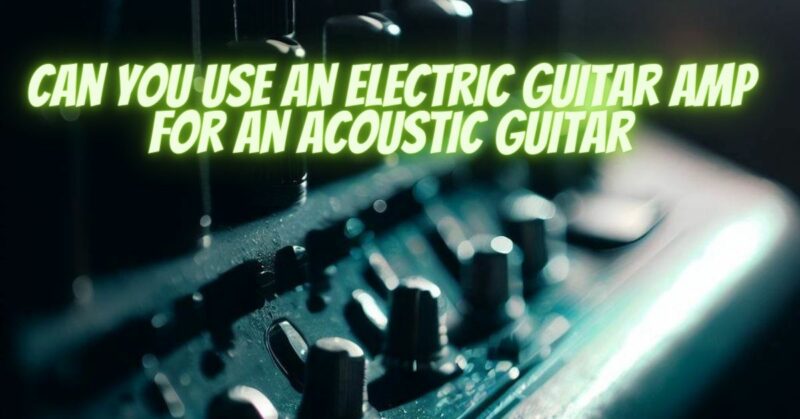In the realm of music, breaking conventions can lead to exciting and innovative outcomes. One such experiment involves using an electric guitar amp for an acoustic guitar. While electric guitar amps are designed with distortion and effects in mind, using them for acoustic guitars introduces a unique set of considerations. In this article, we’ll delve into the possibilities, benefits, challenges, and potential outcomes of using an electric guitar amp with an acoustic guitar.
Understanding Electric Guitar Amps
Electric guitar amps are crafted to enhance the tonal characteristics of electric guitars, often emphasizing distortion, overdrive, and various effects. Their design complements the dynamic range and sonic qualities of electric instruments.
Using an Electric Guitar Amp for an Acoustic Guitar: Considerations
- Tone Transformation: Using an electric guitar amp with an acoustic guitar can lead to a tonal transformation, resulting in a different sonic character that might be intriguing for certain genres.
- Distorted Acoustic Sound: The natural resonance and clarity of an acoustic guitar might be masked by the electric guitar amp’s distortion and effects, leading to a distorted acoustic sound.
- Feedback and Resonance: Acoustic guitars are more prone to feedback when amplified through electric guitar amps due to their inherent resonance. Feedback control becomes crucial in this setup.
Benefits of Using an Electric Guitar Amp for an Acoustic Guitar
- Creative Tonal Palette: The unique sonic qualities introduced by an electric guitar amp can offer a creative palette, ideal for experimentation and adding an edge to your acoustic sound.
- Artistic Expression: If you’re seeking to defy traditional acoustic norms and explore uncharted sonic territory, an electric guitar amp can help you achieve a distinctive acoustic character.
- Effects Integration: Electric guitar amps often feature built-in effects that can be utilized creatively to add texture and depth to your acoustic performance.
Challenges and Potential Drawbacks
- Distortion Dilemma: The distortion and overdrive features of electric guitar amps might not suit the natural resonance of an acoustic guitar, leading to compromised tonal clarity.
- Feedback Management: Acoustic guitars amplified through electric guitar amps can be prone to feedback, requiring careful placement, EQ adjustments, and possibly the use of feedback suppressors.
- Lack of Acoustic Fidelity: Acoustic guitars are prized for their natural sound, and using an electric guitar amp might lead to a departure from this authentic tonal quality.
Expert Tips for Using an Electric Guitar Amp with an Acoustic Guitar
- Use Effects Thoughtfully: Experiment with effects to find those that enhance your acoustic sound without overwhelming it.
- Feedback Control: Pay close attention to the amp’s positioning and use a soundhole cover or feedback buster to manage unwanted feedback.
- EQ Adjustments: Utilize the amp’s EQ controls to tailor the tone to your acoustic guitar’s sonic characteristics.
Using an electric guitar amp for an acoustic guitar introduces an innovative approach to sonic exploration. While the outcome may vary and challenges exist, the creative potential lies in crafting a distinctive acoustic sound that transcends traditional boundaries. By embracing the unique qualities of both your electric guitar amp and acoustic guitar, you can create a sonic fusion that resonates with your artistic vision and captures the attention of listeners seeking fresh and unexpected musical experiences.


